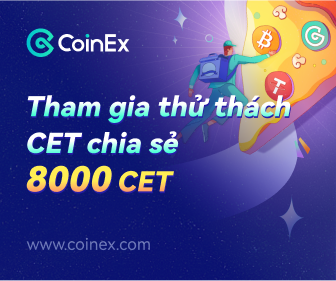
Even though the first wave of the GameFi boom seems to be coming to an end, many blockchain studios are still staging successful multi-million-dollar raises around the globe. Even so, the days when play-to-earn games were all but guaranteed success are over. Now, investors are only looking for the highest-quality games and studios.
Funders are only willing to back projects that stand out. Here are a few strategic steps that can set you apart when you’re looking for capital and preparing for liftoff.
1: Build a team with extensive experience in the traditional gaming sphere.
If play-to-earn is to scale, it must attract traditional Web2 gamers. To get their attention, builders will need to create games with excellent user experience: great graphics, rich lore, and robust mechanics. Therefore, a founding team that can pair Web3 fundamentals with experience creating profitable Web2 games for mobile, desktop, and console platforms will set you apart in this market.
One important thing to note, though, is that talent acquisition can be tough. Demand for skilled devs is so high that the search may take you across international borders. Still, investing time and money in finding the right people is worth the effort.
2: A clear, straightforward monetization strategy is key.
Building a game that will succeed over the long term means developing monetization strategies that can weather the market volatility that Web3 is famous for. This means pairing the best of Web3 tech with proven Web2 revenue models, such as free-to-play. This approach provides better stability no matter what the market conditions are.
3: Be cautious when discussing Web3 technology with VCs.
Being strategic about how you talk about Web3 tech in relation to your game is crucial. After all, investors are wary of builders trying to cash in on trends – and Web3 is very trendy at the moment.
Therefore, focus less on how your game uses Web3 tech and more on why it is suited for success. Who will play it, and how will it make money?
4: Raise enough to survive the worst-case scenario.
VCs want to see evidence that you’ve considered the worst-case scenario. Therefore, plan ahead as far as possible, taking rough patches into account.
What kind of resources would you need if the market became unfavorable? What if you can’t find the right talent? What happens if your launch is unsuccessful? It is never a problem to have too much money, but it can be catastrophic to have too little.
5: You shouldn’t expect to use tokens as your primary fundraiser.
In a bear market, investors will be much more likely to seek equity in your company than tokens. Token warrant-style raises, where investors have the right to claim a certain percentage of tokens issued at launch, may be an exception to this rule.
However, you should be prepared to offer stakes in your studio.
It’s Game Time
Quality matters in the new era of blockchain gaming, and its importance will only continue to grow in the future. Therefore, plan to invest time in finding people who can build great games supported by strong, clear monetization strategies. With these principles in place, raising money or attracting players will become much easier.
Even though the first wave of the GameFi boom seems to be coming to an end, many blockchain studios are still staging successful multi-million-dollar raises around the globe. Even so, the days when play-to-earn games were all but guaranteed success are over. Now, investors are only looking for the highest-quality games and studios.
Funders are only willing to back projects that stand out. Here are a few strategic steps that can set you apart when you’re looking for capital and preparing for liftoff.
1: Build a team with extensive experience in the traditional gaming sphere.
If play-to-earn is to scale, it must attract traditional Web2 gamers. To get their attention, builders will need to create games with excellent user experience: great graphics, rich lore, and robust mechanics. Therefore, a founding team that can pair Web3 fundamentals with experience creating profitable Web2 games for mobile, desktop, and console platforms will set you apart in this market.
One important thing to note, though, is that talent acquisition can be tough. Demand for skilled devs is so high that the search may take you across international borders. Still, investing time and money in finding the right people is worth the effort.
2: A clear, straightforward monetization strategy is key.
Building a game that will succeed over the long term means developing monetization strategies that can weather the market volatility that Web3 is famous for. This means pairing the best of Web3 tech with proven Web2 revenue models, such as free-to-play. This approach provides better stability no matter what the market conditions are.
3: Be cautious when discussing Web3 technology with VCs.
Being strategic about how you talk about Web3 tech in relation to your game is crucial. After all, investors are wary of builders trying to cash in on trends – and Web3 is very trendy at the moment.
Therefore, focus less on how your game uses Web3 tech and more on why it is suited for success. Who will play it, and how will it make money?
4: Raise enough to survive the worst-case scenario.
VCs want to see evidence that you’ve considered the worst-case scenario. Therefore, plan ahead as far as possible, taking rough patches into account.
What kind of resources would you need if the market became unfavorable? What if you can’t find the right talent? What happens if your launch is unsuccessful? It is never a problem to have too much money, but it can be catastrophic to have too little.
5: You shouldn’t expect to use tokens as your primary fundraiser.
In a bear market, investors will be much more likely to seek equity in your company than tokens. Token warrant-style raises, where investors have the right to claim a certain percentage of tokens issued at launch, may be an exception to this rule.
However, you should be prepared to offer stakes in your studio.
It’s Game Time
Quality matters in the new era of blockchain gaming, and its importance will only continue to grow in the future. Therefore, plan to invest time in finding people who can build great games supported by strong, clear monetization strategies. With these principles in place, raising money or attracting players will become much easier.
Source NFT Plazas



